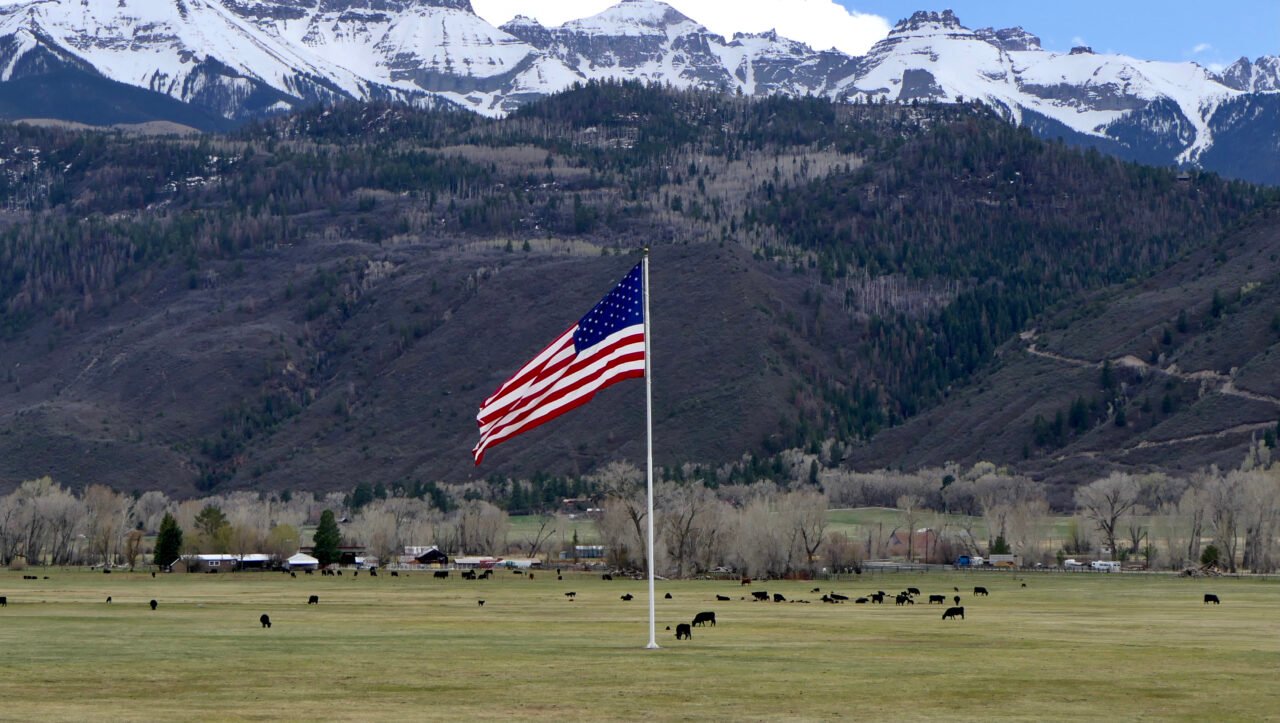Gunnison to Ouray, Colorado – 107 miles

You would think that the settlement of Gunnison would be relatively near the Black Canyon of the Gunnison, one of Colorado’s hidden gems, and although the Gunnison River starts from the headwaters above town, we take over an hour to drive the 60 miles to the Black Canyon National Park. Its location deters most tourists or as one wag suggested, who wants to drive five hours from Denver to look at a hole in the ground, which is a bit mean-spirited to talk about poor old Black Canyon like that. It’s been around a long time and will still be here after the wag and all the rest of us have gone. It’s old, very old. Some of the oldest rocky and craggy spires in America dating back around 60 million years.
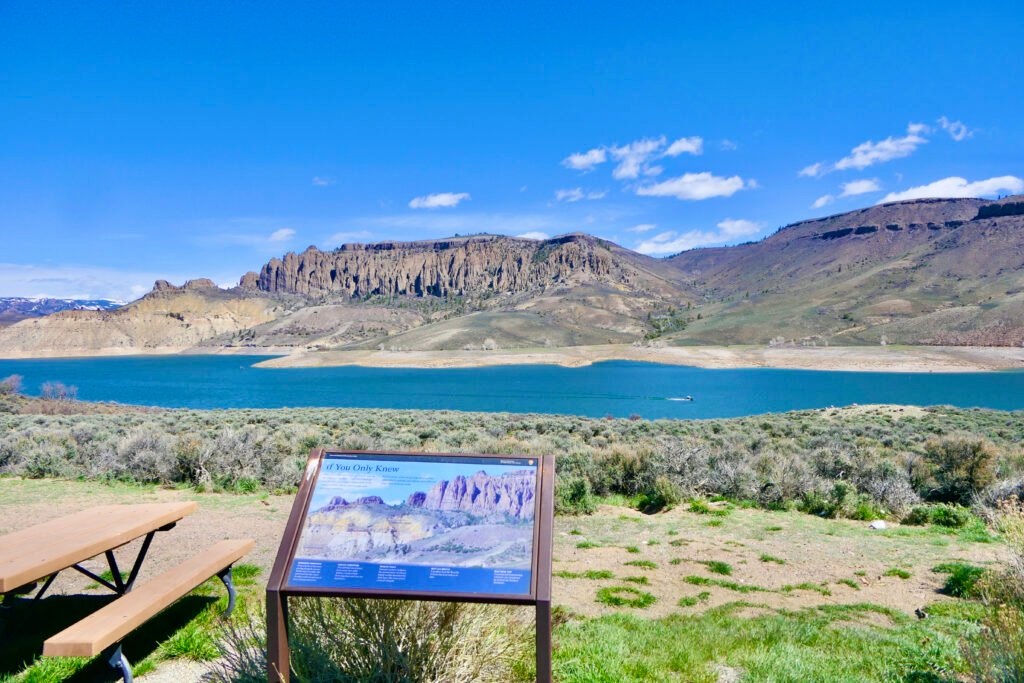
On the drive from the sparsely populated town of Gunnison, we encounter exotically named landmarks such as Sheep Knob, Poverty Mesa and Coffee Pot Hill, and spend the rest of the journey speculating about how they got their names, much to our amusement and seriously wild guesses. We pause at Lake Fork, where the water looks surprisingly low but spectacularly blue. A couple of hawks dangle in the sky, searching for some unfortunate morsel that unknowingly will make itself available for lunch. We watch for a while, hypnotised by the serenity of aerial activity, before a truck hurtles past the layby, its backdraft shaking the car and subsequently me, into action. Never liked truck drivers, ever since I saw the movie “Duel” with Dennis Weaver.
While the more famous Rocky Mountain National Park further north sees over 4 million visitors every year, the Black Canyon, being relatively out of the way, welcomes only around 300,000 annually, but we consider ourselves members of the lucky few. The park boasts natural wonders all around its 2,700 foot cliffs that plunge down to the Gunnison River. The brochure describes it as a small park with a big view, which just shows you that Americans still possess a sense of humour. Small is a somewhat relative word to describe this place compared to somewhere like the Grand Canyon. Gunnison is narrower, and because of this it’s more like a giant chasm, yet somehow manages to feel deeper than its neighbour down the road.
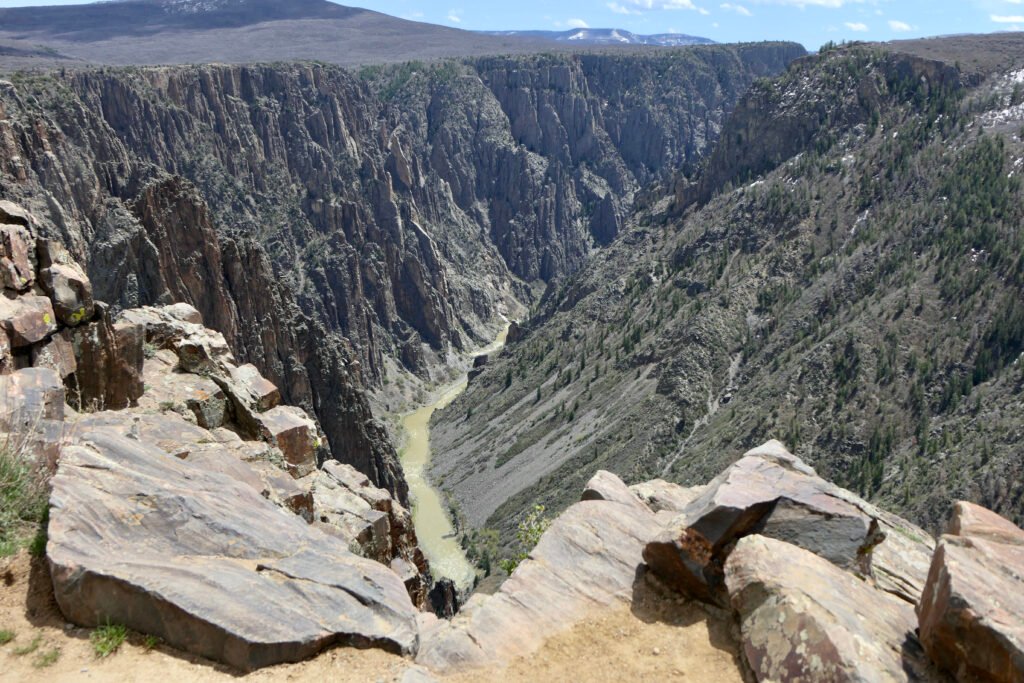
As this is our first National Park visit of the trip, we purchase what has to be one of the greatest bargains in America. The Annual National Park Pass at 80 dollars is a steal, especially if you are visiting more than a couple of parks. The ranger at the tolbooth greets us warmly and asked where we’ve come from, obviously with instructions from above to survey the daily intake. I always try to be careful with my accent with Americans, so have learnt to pronounce it “Scatland” instead of Scotland. He looks at me quizzically, and I’m convinced he hasn’t a clue where we come from, but he exclaimed “that’s a long way”. Mind you, in his world, so is Denver! As there are 18 Scotland’s in America, maybe he was thinking of one of them.
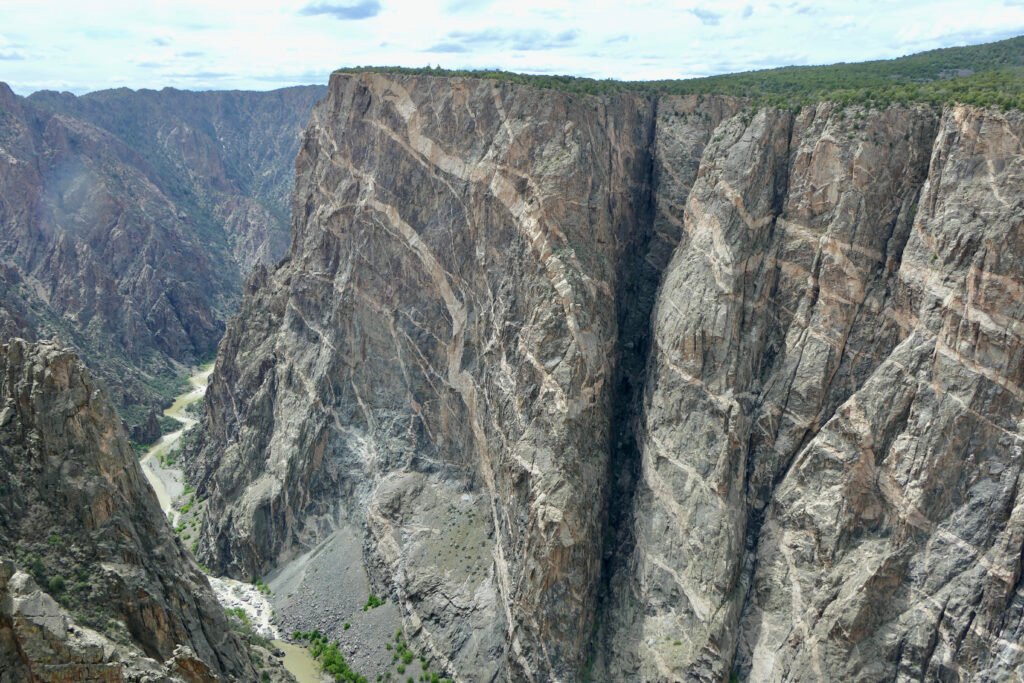
The South Rim drive itself is short, at seven miles, but there are 12 viewpoints along the way with some of them requiring a short hike. The big four overlooks at Gunnison Point, Chasm View, Painted Wall, and Sunset View provide a sense of wonder at the scale of this magnificent place. Pulpit Rock if you have the time, makes it number five. There are no restaurants in the park, although you would think that after 60 million years at least a Starbucks would have been nice, but you can’t have everything. We didn’t come prepared with a picnic, and neither did we have what would become standard fayre for lunch on our journey – a Subway sandwich. We move on.
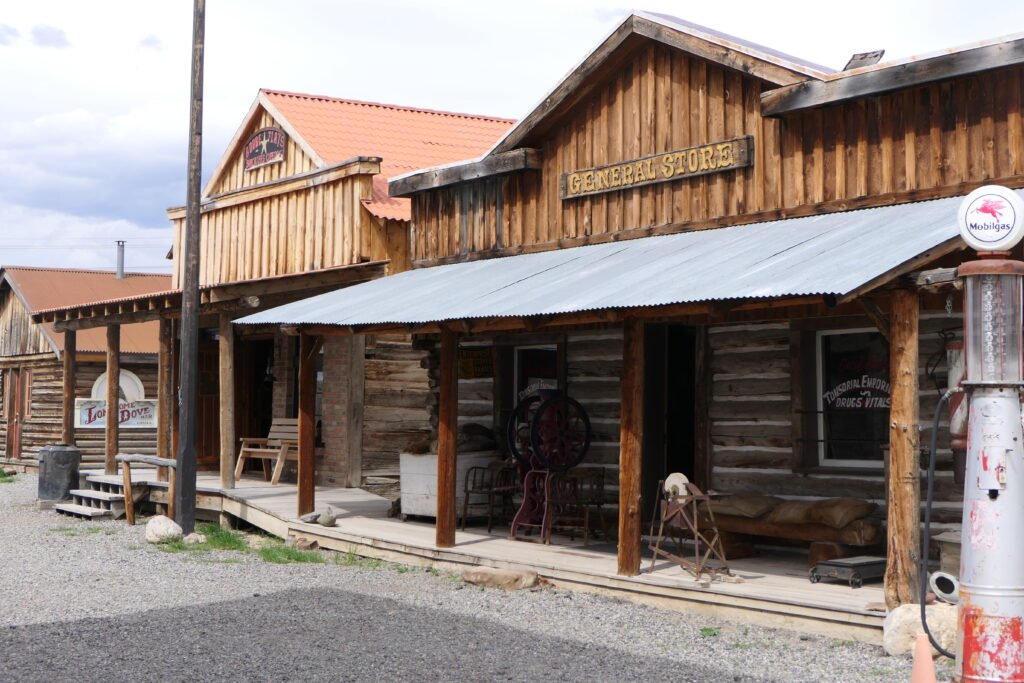
Travelling towards Montrose, we shoot past a remote outpost with a ragged sign advertising the “Museum of the Mountain West”. I realise I had listed it as one of the places to visit, so we turn round and find a parking spot. We are the only vehicle there which doesn’t bode well. I park in front of the office, step up to the boardwalk and have to lean down to open the shop door. Its creakiness gives the place a reassuring authenticity, which is comforting. Like being in an old Western movie.

Two older ladies with big smiles welcome us with open arms and indeed, open tills, as I pay the $15-00 entrance fee. My initial thought is that it’s a bit of a steep price to look around half a dozen ramshackle buildings. How wrong could I be? This was another gem found in the wilds of Colorado. The buildings I had designated ramshackle as my first impression of the place, turn out to be little diamonds in their own right. The carriage works, still housing little carriages, the church still echoing God’s words in its old Western way, the school- house with tiny desks where the little people would have learnt more than a little. Behind each structure there is another building, then another. Twenty-eight in total. The blacksmith shop, seemingly abandoned, then the saloon looking pretty much as if it is still in full working order. Back behind the office there is a museum, with a fascinating indoor street adorned with little shops all crammed with artifacts. All 750,000 of them, all catalogued, and all in their right place and digitally recorded. It is quite amazing. A lot of love and attention has been poured into this place.

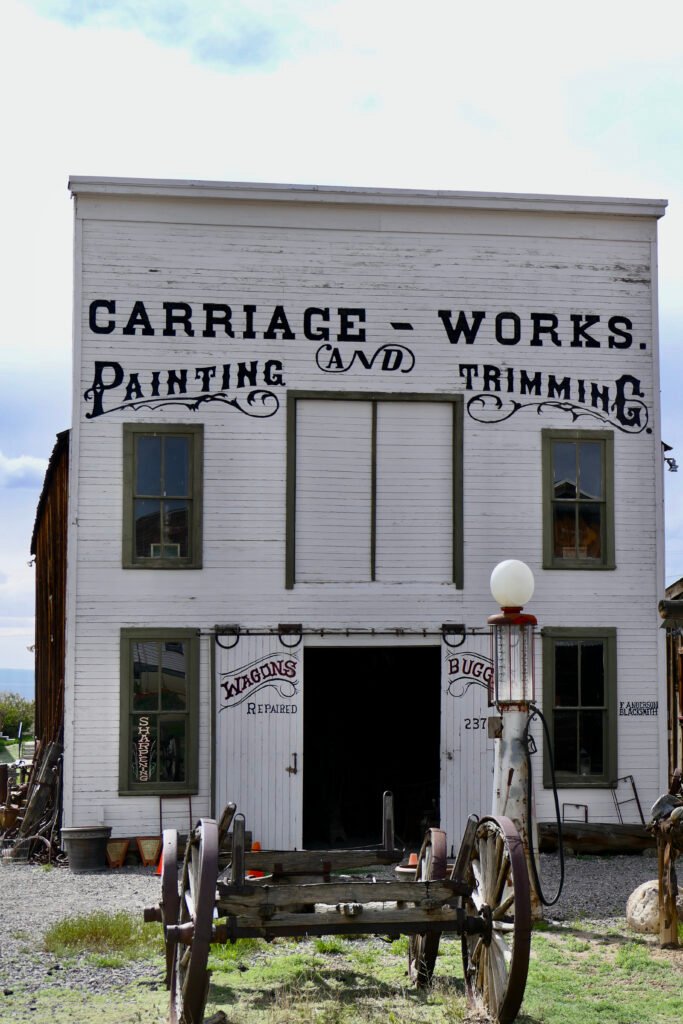

Then I meet Cory, the museum guide. A wonderful, generous old timer with a full white beard, dressed as a sheriff, who has been helping visitors at the museum for several years. We have a long chat walking through the complex, getting to know each other. He’s just a big kid at heart, with a capacity to express the joy he has in his job and adds to the attraction of this quirky place. I’m convinced he doubles up as Santa at Christmas. Thank you, Cory, it was a pleasure to meet you. For all the scenery that surrounds us, it is the people you meet that leave the lasting impression.
We drive on to the town of Ridgeway where John Wayne filmed “True Grit”, and to my surprise it is also the former home of Dennis Weaver who died in 2006 aged 81yrs from prostate cancer. Considering I was thinking about Weaver a couple of hours ago it feels a little spooky.
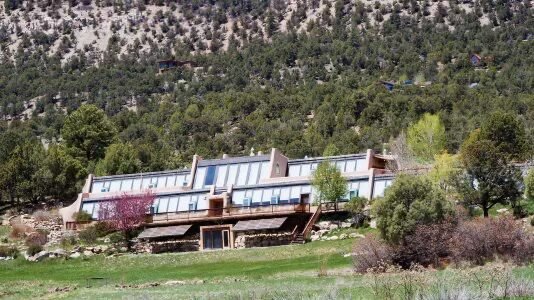
In the late 1980s, he built his new residence, which incorporated various recycled materials, such as old automobile tires and discarded cans. It also featured passive solar power and other ecotechnologies. Weaver called his home Earthship, where he and his family lived for over 14 years.


Sliding into Ouray on Route 50, the town sits at 7,792 ft in the San Juan Mountains and was named after Chief Ouray (meaning arrow) of the Ute tribe. American’s penchant for exaggeration is stretched once again as the town is known locally as the “Switzerland of America”. Admittedly high mountains rise almost directly above the town on three sides, but they look somewhat more intimidating than the charm of Europe’s alpine villages.
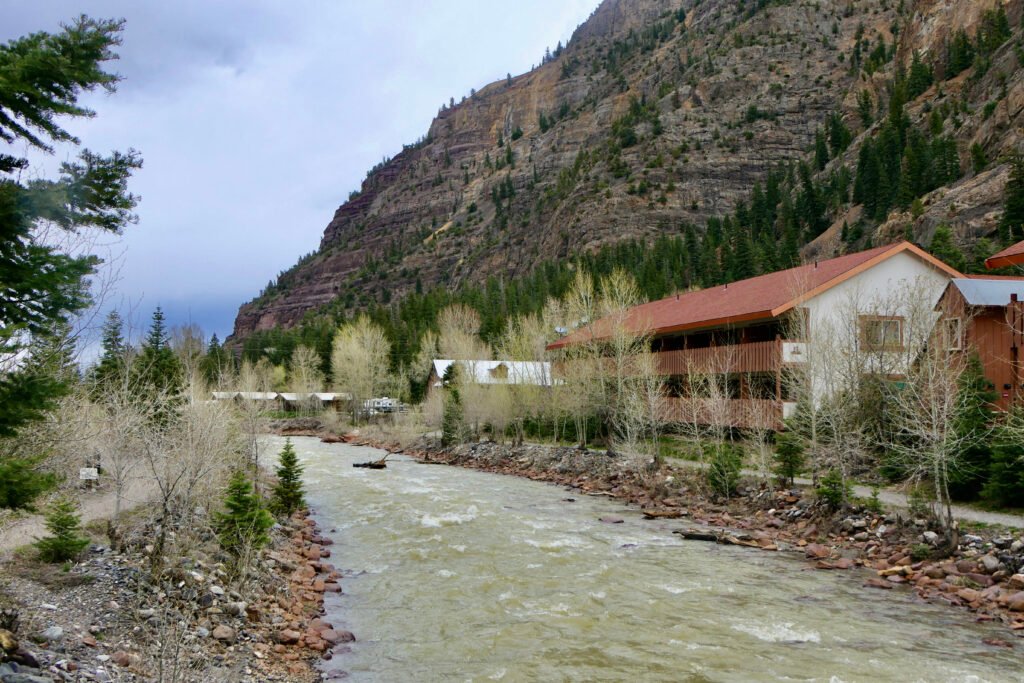
The Hot Springs Hotel doesn’t actually offer hot springs, as they are located elsewhere in town, which is a bit of a trade description failure. Here the accommodation sits beside a freezing, snow-melted bubbling river chattering noisily down the valley. What it does have though, is a rather incongruous stagecoach sitting in the middle of the car park on an island surrounded by greenery. Was this originally a stagecoach stop in days gone by, or did John Wayne simply misplace one during his various skirmishes into Indian country. We’ll probably never know.
Further upstream from our large guestroom and even bigger balcony overlooking the river, is Box Canon Falls, one of the main attractions in town. That is, apart from the Ouray Brewery, the Ouray Liquor store, and the Ouray wine outlet. Which is not surprising as this was a mining town, recognised by all the clapboard buildings in main street. We snuggle down in our room for the night with a few snacks and an Ouray sourced bottle of wine. Another great day.

